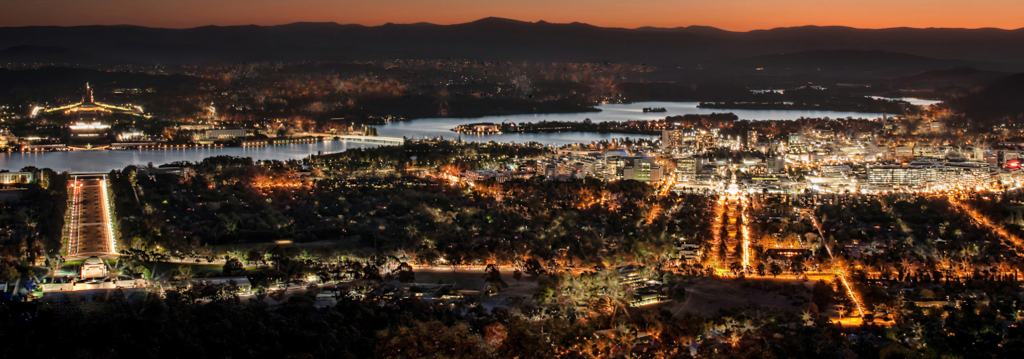Where to begin? The lighting industry has revealed itself to be blinded by its own sales pitch, to question its own “knowledge,” and to evolve our standards in the interests of the community or the environment.
Let’s start with what’s working. The International Dark-Sky Association (IDA) essentially drives its environmental protection methodology with a simple principle—if it isn’t going up into the sky, it isn’t their problem. They’re responsible for the sky, not the land. Of course, they do factor in reflected light, so we’re not just talking about 180-deg cut-off values, but also how much light we use, and the amount reflected off surfaces. But if you wereto ask which rule defines the joint IDA-IES Model Lighting Ordinance (MLO), it would be 180-degcut-off. For the basics of what astronomers need, that sounds reasonable.
Cities adopting IDA and its IES and CIE offspring, etc., see 180-deg cut-off as much the same thing: the core value to be addressed. The overall exitance of a site or project is now considered, but it’s not where the thinking begins. We begin at 180 deg; the horizon is what matters. Various other environmental groups have adopted the requirement, both out of convenience and, generally, a lack ofimagination. Audubon societies, bat-protection organizations and turtle-protection groups all ask for the application of 180-deg cut-off.
So why do we think 180-deg cut-off is the right solution? Because it’s a brand. It’s an identity. “This project is environmentally sensitive; we use 180- deg cut-off.” Now you’re thinking, “phew, I’m an engineer, not an IDA policy writer, I’m off the hook from this criticism.” No, you’re not. Not you, not the manufacturers, not the regulators, not the municipalities. Why is 180 deg the wrong cut-off angle? Why is the default to 180 deg bad engineering thinking? Simply put, for four reasons:
- Every engineer took a class in engineering school on dimensioning and tolerancing. Everything built in this world has a tolerance—a variation that occurs due to site conditions, variations of manufacture, unanticipated deformations of materials, etc. When it comes to street poles, these are concrete or galvanized iron poles, maybe even wood, each with their variability. The variability in a pole head’s leveling is substantial—call it 3 to 5 deg depending on a lot of factors—but it gets worse as you look at poles that are carrying a low-weightLED fixture in place of an original heavy fixture. The assumed weight load, pulling down the armature isn’t there, so there might be another 10 deg of angle at the head. Few cobra-head LED fixtures are actually level. Then there’s aging and variation over time. Additionally, lot of jurisdictions raise the face of the luminaire slightly out towards the road. So, 90-deg off axis, theoretically horizontal, it might be 15 deg above the actual horizon, or the opposite side the same below. Why engineer a luminaire to factory levels of precision at 180-deg cut-off and then mount it with such tolerances? All light generated out of tolerance is a contribution to sky glow, without value; 180-deg cut-off doesn’t accommodate reality. And just above horizontal is where birds and bats fly, as well as where human eyes are looking out into the distance.
- With a few exceptions, the light thrown off a pole at 89 deg, just below horizontal, is wastelight anyway. Actually, it’s worse. That light is hitting the ground plane half-a-mile away at ahuge cosine angle and providing…nothing. But to the eye, out there in the distance and looking back at the pole, it’s producing glare, closing down the pupil, reducing the sensitivity of the eye and in doing so, reducing the value of the energy and light we put into the environment. In fact, cutting off the light at away would dramatically improve the visual effectiveness of the rest of the light. Cutting it off to five mounting heights’ distance would be better.
- What about the eyes below the source height? Finally, cities are seen across panoramas? Birds may fly above poles, but they roost, hunt, mate and feed below. The field of area light fixtures in a dark-sky city is still above most animals’ heads most of the time and through most of their lives. They can see a light head a near infinite distance away most of their life. Ditto bats, insects and terrestrial species. Don’t get me started on turtles, whose eyes are literally a hand-span above sea level as they enter the surf. A 180-deg cut-off does little to nothing for these species; in reality, their eyes are below pole height. The requirement is slung into the regulations around these animals as “best practice.” Or it’s called “downward facing,” but it might as well be called “horizontal facing with a lot of light down.”
- The most topographically flat city is seen from below every pole head, and in hillier cities, generally from below most fixtures. So, for our own pleasure, why do we want to throw light horizontally into our own eyes? The vision of a city at night is as a field of light points now damped down from a plane above, but not to pedestrians, drivers and wildlife. Mostly we see cities as a field of points, and from any given distance, elegant uses of light such as wallwashing or grazing textures of art and monuments, the lighting can’t be seen. It takes a vast amount of energy to light enriching visual features at night, and most of that is going in to accommodate our own eyes’ adaptation to the glare of street and area lighting. Our cities would be that much more beautiful for addressing this problem; the feature lighting we’ve already done would be that much more impactful.
One of my colleagues is currently relighting a university campus entirely with “acorn-style lamps for a traditional look.” The campus engineer, quite rightly, walks the campus with a light meter and shows that there’s barely a corner that doesn’t meet egress code. Meanwhile, administration is dealing with surveys that endlessly report that the campus is dark and underlit, because every eye, looking in every direction, is dealing with being swamped by horizontal, and even upward glare, sucking the value out of the superb downward light levels. This, of course, is not a 180-deg cut-off environment, and certainly, it would be better for being so, but it represents the conflicts between practical flat-faced luminaires and glowy-things. Glowy can be good. Glary never is.
Even the BUG rating, which would directly improve our campus project, actually fails even to address some of the reasons above—it quantifies some of them, but fails simply to ask the basic question: is there an angle of light emission we could easily eliminate, that is not beneficial, but is harmful? Reducing glare numerically doesn’t change the fact that the eye sees points of light across night landscapes far and away more effectively than the lit surface below. There is no visibility to a point source that is subtle enough. Can we eliminate a view back to the source for everyonenot lit by an area light? Could we live only with the glare of the lights above our heads, and not those across the valley?



It’s time to talk about 160, 150, and 120-deg cut-offs that are appropriate to the task and cut off the light from where it simply isn’t needed. BUG? It’s the step after establishing a new industry-wide cut-off default. Celebrate it for what it does well, but recognize that it’s Step 2. Let’s define our outdoor area lighting by its functional area, and the cut-off appropriate to that task, if that needs to be tighter than the new 160 deg.
Or at least, if we’re an unimaginative bunch ofterrible designers and engineers, let’s set ourselves a cut-off that limits light to five or 10 mounting heights’ distance away from a source, that accommodates tolerances to at least some extent, and brand that.
Also consider a simple fact: it’s not that hard to engineer a product for a specific cut-off angle, we do it all the time in interior lighting, whether it’s hyperbolic, dark-light or high-contrast optics. We endlessly do projects where, if not under a light, the light appears off. Let’s align our lighting footprints with our cut-off angles. Is it that streetlight manufacturers just find flat glass is “good enough and easy”?
If 160 deg is the new 180 deg, who will resist? Not the astronomers, anything less than 180 deg is a win for them. Not the environmentalists. Not the neighbors. Maybe the manufacturers. And maybeour own apathy that let 180-deg cut-off be the misinformed doctrine for more than 50 years.


A City More Beautiful
I fly over the world on a regular basis. I visit 40 cities in a year. I see luxurious, sprawling suburbs, I see tightly packed inner cities, I see dull, lifeless apartment blocks rolling on for forever. I can see all that by day. At night? I just see rich and poor. Rich is white light, poor is amber light. That’s the spectrum of character we see at night from the sky.
Then there’s the question of whether the city values the night sky—do we see an endless carpet of points, or a glowing ground plane? It’s beautiful when we see just the green of the football pitches, the odd glowing swimming pool, perhaps a state capitol building or a grand historic church, liberated of the points of streetlight that would otherwise obscure it.
From above, dark-sky policy is starting to bear fruit, jurisdiction by jurisdiction, even as legacy industrial applications remain, their wallpacks blazing away, marking them as “grandfathers” in re-lit cities. It’s not moving fast enough, and we’re overlighting, but the points? City by city, they’re beginning to disappear. From the sky, we’re beginning to achieve a new beauty, not to mention the environmental benefits. What about on the ground, as we look across a city, what do we see? We see dots. We don’t see beautiful churches from half-a-mile away, we see the streetlights in between. We don’t see the gently washed façades of a concert hall, we see streetlights.
The human eye is immensely adaptable to wildly varied lighting conditions, from seeing by starlight to sunlight; grabbing details under a surgeon’s task light while seeing the room around; seeing a date in the dark of a theater. We’re adaptable—but not infinitely so.
Over the years of designing island resorts, one of the key things I’ve learned is that if you can see the dot of even one lamp, one bulb, one under-diffused light, everything else disappears; the eye collapses the world into a field of points. We take all that visual richness and collapse it into a field of points. Hardly a great success for lighting designers.
What can we do about this problem? As it happens, the solution is relatively easy. We should accept that close at hand, we’re going to see the source in adjacent streetlights, out to a couple of pole spacings. We accept that we can see those lights—they’re the ones that are illuminating us, our activities and our safety. But beyond that, we need hard cut-off. It’s time for us to move from 180-deg to 160- or 150-cut-off, so light has a visual footprint more or less aligned with their effective footprint.


